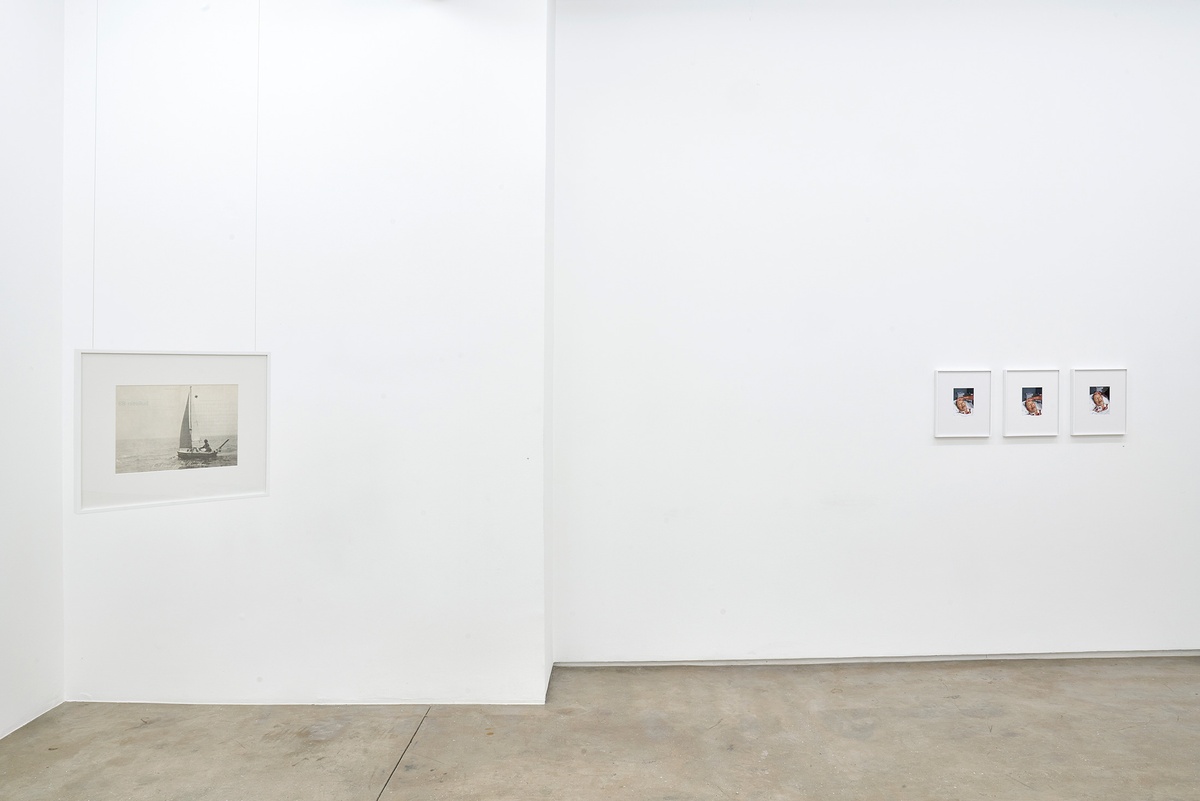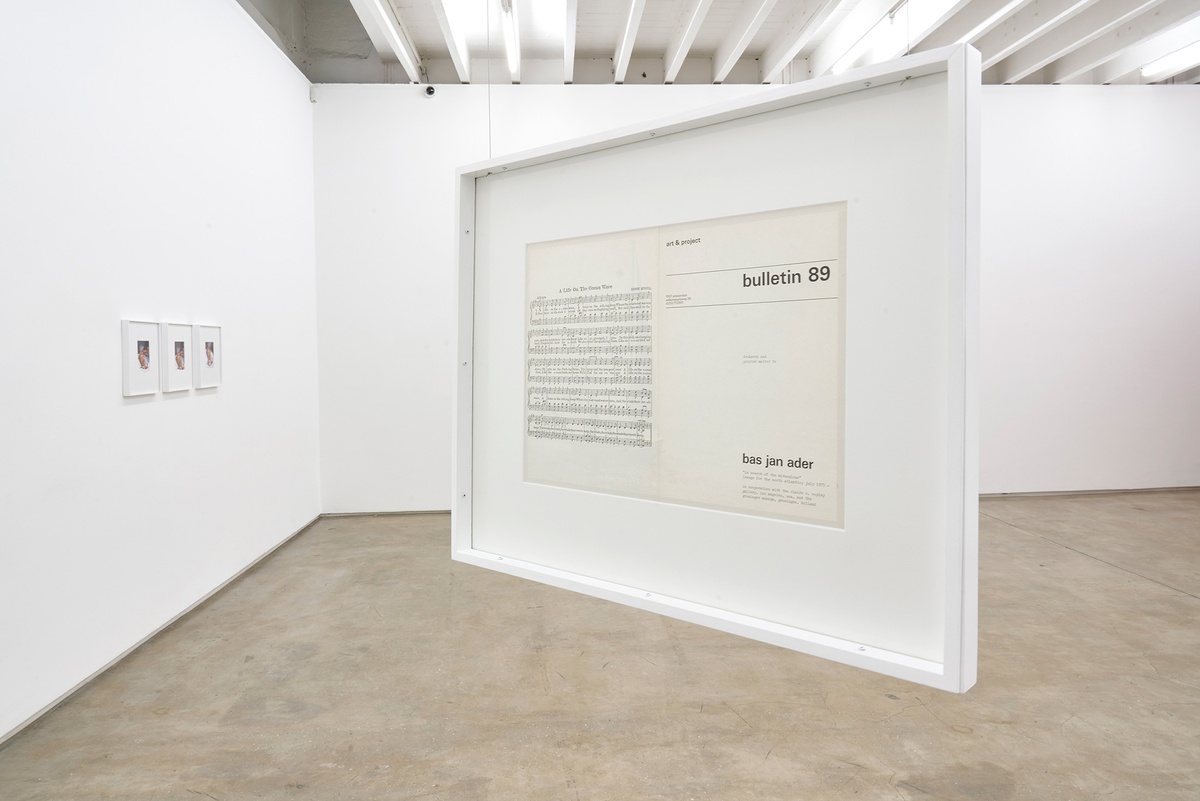Pieter Hugo

This triptych is a dispatch from life's edge; set in a hospital bed, the hand of a loved one reaching into frame in a final gesture of care. The title is taken from his father's government-issued death certificate; a life recalled in six words and two dates.
–
Excerpts from a conversation with Pieter Hugo (P.H.) and Josh Ginsburg (J.G.), held in person in preparation for You to Me, Me to You, Friday 4 August:
P.H. My father became very ill just after the lockdown lifted. He went into hospital – at first for something minor, but then it became increasingly serious. Two days or so before he passed away, it became clear that he wasn’t going to turn a corner, although the doctor never said so. I was not living in Cape Town at the time, but I came down – and I was shocked when I saw him. I hadn’t realised how serious it was. I think my mom, in my communications with her, had omitted the gravity of what she was facing. We went to visit him, and I just knew I wasn’t going to see him again. He was slipping in and out of consciousness; his complexion had changed completely. He became very childlike – he was heavily medicated – but had brief moments of recognising what was going on around him.
These three portraits were made. I’d been taking some pictures in the room – it gave me the space to distance myself at moments when it became too much. We were sitting there for hours. At that time, the work I’d been busy with over the last couple of years was very much around my family. And I’d realised that if you don’t insert yourself into your work, what’s the point of making it in the first place? That it might feel transgressive, but it’s necessary.
There was a moment when my mom had her hand on his head, and those are the last frames I made of him – after that, he didn’t wake up again. We left that evening and received a call later that night to say he had passed.
We had a wake at my mom’s house a year or more later. I didn’t feel like making a speech, but I wanted to contribute in some way. I went through my parents’ extensive family albums and my dad’s phone, his digital archives, and put together a series of photographs – roughly chronologically – from birth to death, the journey from his early youth to the portraits of him in the hospital.
I became a photographer because of my father. He bought me my first camera. He was interested in photography. He was a terrible photographer, but he got pleasure from my pursuit of it and encouraged it. He was always very willing to pose for photographs for me. Unfortunately, a few years ago, I got drunk and burnt down my archive of photographs I’d taken in my twenties and earlier. Stupidly. It felt necessary at the time. Now, I regret it. I don’t think I ever recalled my dad saying to me, please don’t take a photo. He was always up for it. He always had a pose that he struck when I photographed him – kind of pulled his head up to a certain angle and lifted his chin in a weird way. Very unnatural. This is among the reasons why I didn’t feel that taking photographs with him at that stage of being so incredibly vulnerable was wrong or inappropriate.
When I look at these three pictures, I see a silent scream. I see someone acknowledging: the reason I’m being photographed is because I’m not going to make it out of here. It is a moment of lucidity, the gravity of that situation sinking in.
J.G. Your dad’s initial interest in photography ultimately inspired you to pursue this gesture, and this act of photographing him is something of a love note to him. There’s a circle there, an offering back to him.
P.H. I didn’t have a smooth relationship with him. It was very fraught. I photographed him and my mom together for Kin. It’s not a particularly flattering photo of them. He had strong opinions about the image but wasn’t upset about it, only annoyed that I photographed him while he had a hangover.
J.G. That transition from a family photograph to an artwork is quite a curious one.
P.H. In my family’s house on the West Coast, there’s a wall of family photographs next to the fridge that one can’t help looking at. Something about those family photo walls; you just get sucked into them. This wall infuriates me because it feels like a wall of lies. Even though it’s not – those moments did happen, and they are real – it still feels like propaganda. It is a very curated view of family life.
J.G. Images constitute a fraction of a life, and family photos tend to be the affirming edges of it.
P.H. Exactly. These photographs serve a function to project an image of happiness and stability, which is not true. It is only a very limited facet of the bigger picture. I think that a lot of my work, which can be very confrontational, and sometimes border on cruel, is a reaction against this.
—
P.H. When I started practising as a photographer, and I started working in medium and large formats, making portraits, I was always working on a tripod. The ritual of taking a camera out of a bag, asking permission to photograph – most people think you’re just going to make a quick snap – but then you take the tripod out and put a large-format camera on it. The process alerts the subject that there’s an important dynamic that’s at play. Often the subject realises this and switches into something that is more earnest – not something taken, but now a collaboration.
J.G. The staging brings both parties into view... Your dad as a subject is an interesting case in relation to this. Here, you have command, total command, in a sense, because he was not able to relate physically in his vulnerability.
P.H. The power balance lies with me. But my intent isn’t malicious. In fact, it is the opposite.
J.G. Your father encouraged you in a discipline that ultimately gave you a tool to process his death. That is quite a remarkable gift... The photograph becomes a mechanism for saying goodbye.
b.1976, Johannesburg; works in Cape Town
“My eye is drawn,” the photographer Pieter Hugo writes, “to the peripheral, particularly in Africa, and I negotiate contexts where the cultural nuances of our time are amplified.” Mediating the representation of marginalised people – on the continent and elsewhere – Hugo is attuned to the voyeurism of photography and its claims to realism. “I am of a generation that approaches photography,” he says, “with a keen awareness of the problems inherent in pointing a camera at anything.” In all his photographs, his subjects participate in making their image. Hugo more often works with a large-format camera, which requires a setting up of the image, a conversation with his subject, necessitates time spent. As such, his photographs are never covert, seldom spontaneous, but made with the deliberate care the medium demands. Hugo’s photographic essays have included such various subjects as Liberian boy scouts, people with albinism, Nollywood actors, and Mexican muxe.


